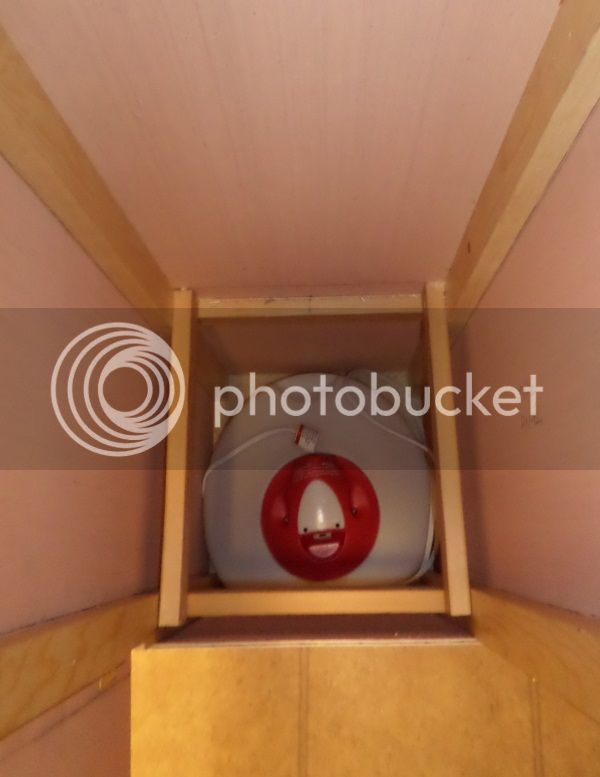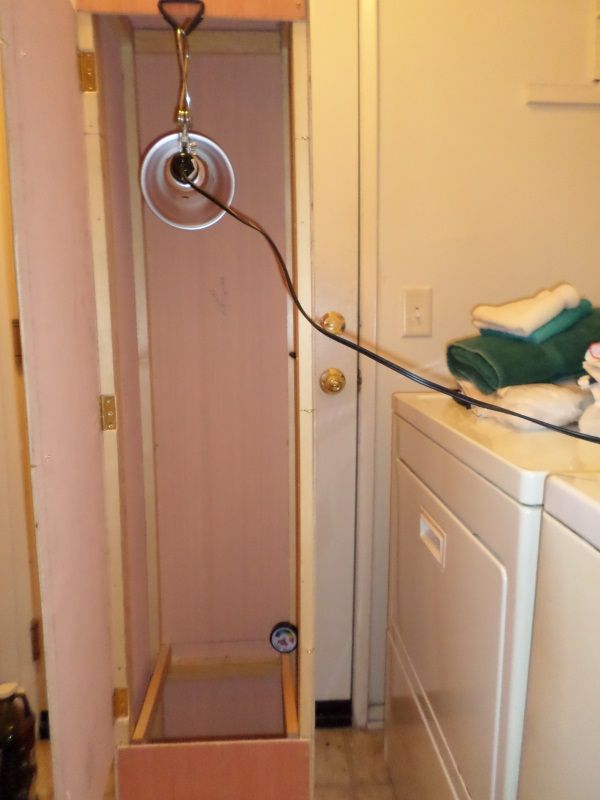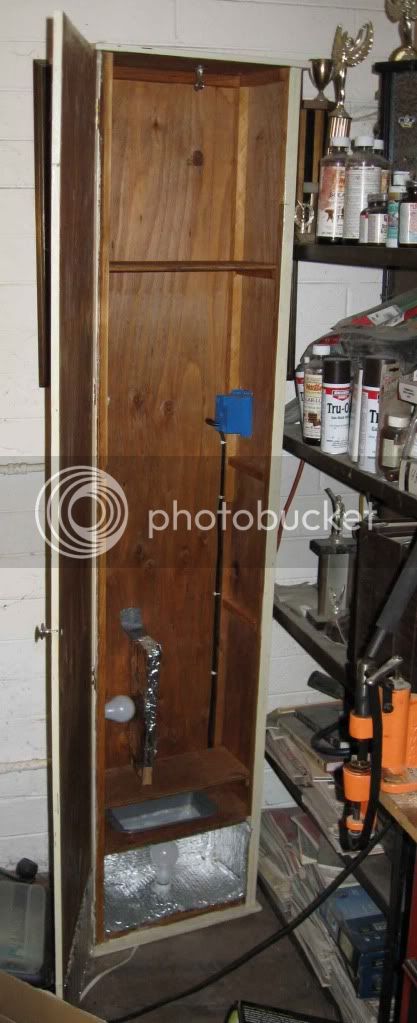Cpl. Ashencheeks
40 Cal.
- Joined
- Mar 31, 2014
- Messages
- 336
- Reaction score
- 15
I pretty much live in a very dry environment so it made sense to build a damp cabinet for rust browning.

I had no real plans, but just found some images of rusting boxes around the internet and in one of my books and just kind of eyeballed everything together and made adjustments as it went together.
It is made from 1x2s and door skin and the door is shut with hook and eye hardware with hinges held steady by molding which is not for looks but utility.
The door of the cabinet will readily accommodate a 42" long barrel but will pieces of metal if the doubtful need should ever present itself.
I built it around a humidifier found in most any drug store.

I have some questions before using it.
I will be using LMF browning reagent.
I have an option to use either the humidifier or a light bulb and pan.

Is there an advantage to using one over the other?
With the bulb and pan I am guessing the humidity would be a little more controlled but slower and perhaps more consistent throughout the box.
With the humidifier it would be a lot quicker to bring the humidity up but I was wondering if it ends up 'raining in the barracks', would this be problematic to metal finishes while browning them?
Someone in my household also expressed a concern over possible mold issues and asked if it should be ventilated.
Any hints or tips on using a tool like this?
Thank for reading this.

I had no real plans, but just found some images of rusting boxes around the internet and in one of my books and just kind of eyeballed everything together and made adjustments as it went together.
It is made from 1x2s and door skin and the door is shut with hook and eye hardware with hinges held steady by molding which is not for looks but utility.
The door of the cabinet will readily accommodate a 42" long barrel but will pieces of metal if the doubtful need should ever present itself.
I built it around a humidifier found in most any drug store.

I have some questions before using it.
I will be using LMF browning reagent.
I have an option to use either the humidifier or a light bulb and pan.

Is there an advantage to using one over the other?
With the bulb and pan I am guessing the humidity would be a little more controlled but slower and perhaps more consistent throughout the box.
With the humidifier it would be a lot quicker to bring the humidity up but I was wondering if it ends up 'raining in the barracks', would this be problematic to metal finishes while browning them?
Someone in my household also expressed a concern over possible mold issues and asked if it should be ventilated.
Any hints or tips on using a tool like this?
Thank for reading this.








